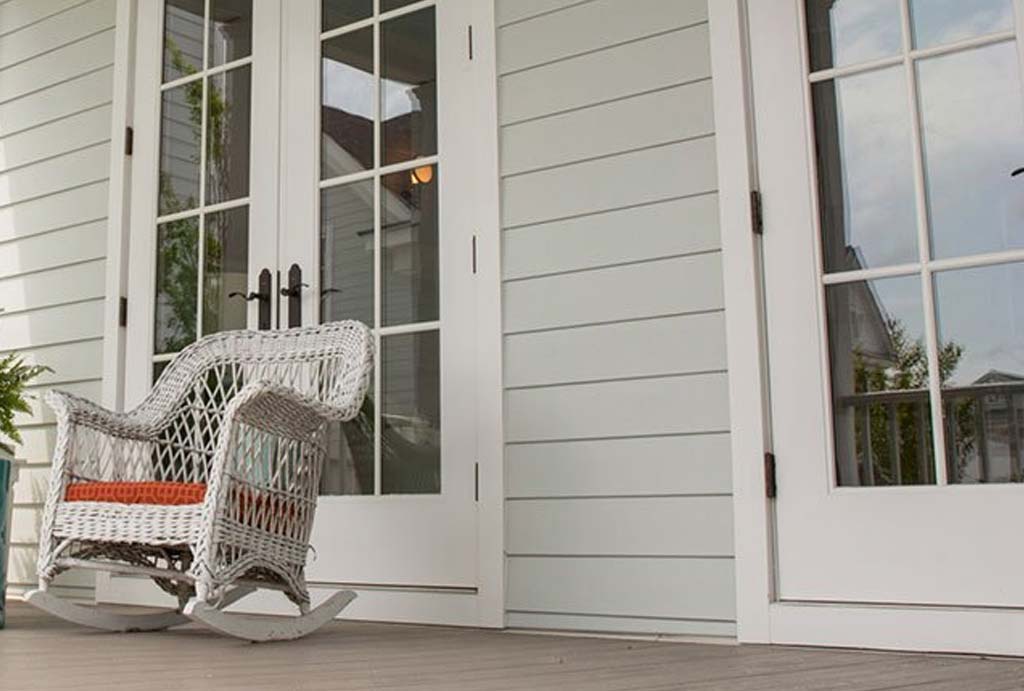Your roof does the heavy lifting when storms hit but gutters and siding do the quiet, everyday work that keeps your roof healthy. At Stay Dry Roofing, we see the damage that starts small and grows expensive when gutters or siding are ignored. This article explains, in plain language, how gutters and siding protect your roof, what to watch for, how often to act, and what we do to keep homes in Indianapolis dry and safe.
Gutters: your roof’s first line of defense
Gutters catch rainwater that runs off your roof and carry it safely away from your home. When they’re working right, they stop water from pooling at the roofline, flowing behind shingles, and soaking the wood under your eaves. When gutters are clogged, pitched wrong, or damaged, water can back up and do damage to shingles, underlayment, fascia boards, and even the roof deck itself. This is a common reason small leaks turn into big problems.
Indianapolis weather with sudden heavy rains, spring storms, and winter freeze-thaw cycles makes reliable gutters especially important. A properly installed system and clean downspouts help protect your roof during these events and reduce the risk of water intrusion under the shingles.
How siding helps (and how it hurts when it fails)
Siding is more than curb appeal. It acts as the outer shell of your home, shielding walls and roof edges from wind-driven rain and moisture. Damaged or failing siding lets water seep into wall cavities and the roof perimeter, which can lead to rot in the roof’s eaves and framing. Over time, this moisture creates the perfect conditions for mold and wood decay problems that can weaken roof attachments and shorten the roof’s lifespan.
Good siding works with your roof and gutters as a system: siding guides water downward and gutters move it away from the house. When one piece fails, the other two take on extra stress and can fail sooner.
Common ways gutters and siding harm your roof
Below are the problems we see most often in Indianapolis homes:
- Clogged gutters and backed-up water. Leaves, pine needles, and debris block flow. When water can’t move through the gutter, it overflows and soaks the roof edge and the siding, pushing water under shingles and into the roof’s structure.
- Improper slope or loose hangers. Gutters must have a slight pitch to the downspout (about 1/4″ per 10 feet). If they don’t, water pools and finds weak points at the roofline.
- Downspouts that dump is too close to the foundation. That causes pooling at the base of the house, undermining soil and letting moisture creep into crawl spaces a problem that can affect the lower roof and eaves over time.
- Damaged or missing siding. Cracked or loose siding lets water get behind the exterior, where it can rot the sheathing and fascia that support the roof edges.
- Ice dams in winter. When gutters are clogged or ventilation is poor, ice dams form and push water under shingles. That water can damage the roof deck and interior ceilings. (This is a seasonal risk here in Indiana.
Signs you shouldn’t ignore (call us or inspect immediately)
If you notice any of these, don’t wait for red flags that your roof could be at risk:
- Water spilling over gutters during light rain.
- Brown stains on siding or the roof soffit.
- Shingle edges lifting near the gutter line.
- Sagging or detached gutters.
- Pools of water near your foundation after storms.
How often should you maintain gutters and siding?
As a rule of thumb, clean your gutters at least twice a year spring and fall. Homes surrounded by trees or those that see heavy storms may need more frequent attention. Regular inspection of siding checking for loose panels, cracks, or missing caulk should be part of your seasonal maintenance routine. Doing this can stop small issues from becoming costly repairs.
Solutions that work (what we recommend)
At Stay Dry Roofing, we treat the roof, gutters, and siding as one team. Here’s how we protect the whole system:
- Gutter cleaning & maintenance: We remove debris, flush downspouts, inspect hangers and seams, and adjust ensure proper slope and flow. This simple work prevents many roof problems before they start.
- Seamless gutter installation: Seamless gutters reduce joints (and leaks). When paired with correctly sized downspouts and proper placement, they move water efficiently during Indiana storms.
- Gutter guards where appropriate: Guards cut down on leaf build-up. They’re not a total “set it and forget it” solution, but they can significantly reduce cleaning frequency and keep water flowing.
- Siding repair and replacement: If siding is allowing water intrusion, we repair or replace the affected sections and ensure a weather-tight seal around roof junctions, vents, and windows to protect the roof perimeter.
- Full-system inspections: We inspect the roof edge, fascia, soffit, gutters, and siding together — because the weakest link can undermine the rest. Our inspections identify improper gutter pitch, failing fasteners, or hidden rot before they become emergency repairs.
Real examples what neglect can cost you
A clogged gutter might seem harmless until water starts to push under shingles and rot the roof deck. Replacing a few feet of fascia is far cheaper than replacing sheathing, dealing with mold mitigation, or tearing off a roof prematurely. We’ve repaired roofs where the visible problem started with a simple gutter clog. Investing in maintenance saves money and protects your home’s value.
DIY care what you can do safely
If you’re comfortable with ladders, here are practical, safe things you can do:
- Clean gutters twice a year and after big storms. Use safety gear and a sturdy ladder or hire pros if you’re unsure.
- Check downspouts for clogs by running water through them from the top. If water doesn’t flow, detach and clear the clog.
- Look for peeling caulk, cracked siding seams, or loose panels at roof intersections and around windows. Small repairs delay bigger problems.
If you’re not comfortable or your home has multiple stories, call us safety and proper technique matter.
When a pro is the right move
Call Stay Dry Roofing when:
- The gutters are sagging, detached, or pulling away from the fascia.
- You see water stains inside the attic or along the ceiling near roof edges.
- Siding seams or trim around the roof are cracked or missing.
- You want a permanent solution like seamless gutters or professional gutter guards.
Our crews are trained to diagnose hidden issues a quick gutter or siding fix can prevent an expensive roof replacement down the road.
Why choose Stay Dry Roofing in Indianapolis
We’re a family-owned local business that knows Indiana weather and the common failure points on homes in Marion County and surrounding communities. We combine honest inspections with quality materials from properly pitched aluminum gutters to durable siding repairs so the whole system works together. Our goal isn’t to sell the biggest job; it’s to keep your roof doing what it was built to do.
Final checklist protect your roof starting today
Use this quick checklist to help protect your roof this season:
- Inspect gutters and downspouts for debris and pitch
- Clean gutters at least twice a year; more often if you’re under trees.
- Look for brown stains or soft spots on siding and soffits, repair promptly.
- Ensure downspouts discharge water at least 3–4 feet from the foundation.
- Schedule a professional inspection if you see sagging gutters, lifted shingles, or attic water stains.
We’ll help you keep it simple
Roof health doesn’t start at the peak of the attic it starts at the edges. A clean, well-installed gutter system and tight, weatherproof siding protect the investment you made when you installed your roof. If you’d like us to inspect your gutters, check your siding, or walk your roof with you, call Stay Dry Roofing. We’ll give you practical advice, a clear estimate, and options that fit your budget because protecting your home shouldn’t be complicated.
If you’d like, we can schedule a free inspection and provide a no-pressure plan that keeps rainwater where it belongs: away from your roof, siding, and foundation. Call or text us at Stay Dry Roofing we’re in your neighborhood and ready to help.



